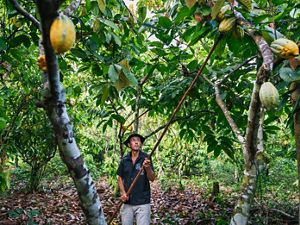Description
Probably no other place on Earth is more critical for human survival than the Amazon. Nearly the size of the continental United States, the Amazon spans nine countries (Brazil, Peru, Bolivia, Ecuador, Colombia, Venezuela, French Guiana, Guyana, Suriname), but 60% of it lies in Brazil.
The Amazon rainforest is the largest remaining tropical forest on our planet. It is home to:
- 1/3 of the world’s species;
- 1/4 of the world’s freshwater;
- 1/5 of the world’s forests;
- 48 billion tons of carbon dioxide in its trees;
- 200 indigenous and traditional communities.
The Brazilian Amazon is also home to 21 million people (the population of London, New York and Los Angeles combined), including 200 indigenous communities.
While the Amazon rainforest is one of the most important places on Earth, it is also one of the most threatened.
Brazil has already lost 20% of its rainforest to deforestation, making the country one of world’s biggest contributors to greenhouse gases and global climate change.
The Nature Conservancy is working with a diverse array of partners to ensure a sustainable future for people and nature in the Amazon
What the Conservancy Is Doing
The Conservancy works on four main focus areas in the Amazon:
- Smart infrastructure: Roads, farms, dams—development is happening throughout Brazil, including the Amazon rainforest. The Nature Conservancy is working with partners to guide sustainable development in places like the Tapajos River, one of the Amazon’s largest and most diverse tributaries.
- Sustainable farming: Brazil is the world’s second largest beef producer and grows 1/3 of the world’s soy. How will they meet growing demands for food and also protect the world’s largest rainforest? The Conservancy is working with farmers, ranchers, companies, local communities and others to improve agricultural and ranching practices and transform food production systems.
- Indigenous communities: For centuries, tribes have been an integral part of the Amazon rainforest. Indigenous territories occupy 22%—more than 300 million acres—of the Amazon, including many of its best-preserved areas. The Nature Conservancy believes that one of the most effective ways to achieve lasting positive outcomes for nature and people is to partner with indigenous peoples and local communities on shared conservation goals.
- Climate change and deforestation: The Conservancy is working across Brazil with many partners to reduce—and nearly stop—deforestation. We are working with government to better monitor deforestation and implement laws to reduce it, and we are working with corporations to support these efforts and influence market demand.

